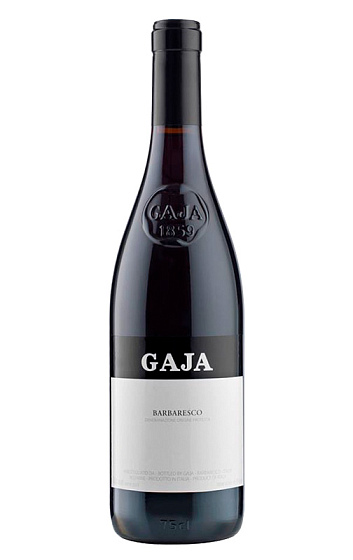Gaja Barbaresco 2016
Descripción
Gaja Barbaresco es la pieza más importante de la "partitura enológica" de Gaja, un tinto que simboliza como pocos el compromiso histórico de la familia Gaja con la denominación. Para garantizar la máxima calidad la bodega marcaba un antes y un después en 1961 al dejar de trabajar con viticultores históricos de las uvas para utilizar únicamente la Nebbiolo de 14 parcelas propias en los pueblos de Barbaresco y Treiso. La añada 2016 recuerda a la gran añada 2004 pero con más elegancia y delicadeza si cabe. Tiene potencial para ser una cosecha imprescindible para los amantes de Barbaresco.
Ficha técnica
Cata
Viñedo y elaboración
Opinión de los críticos
I tasted this wine over two sittings, one at the winery and one at my home office a few weeks later. Although I can't claim any extraordinary differences between the two sessions, I noticed a few minimal shifts that are essential to understanding the wine's future aging ability. The 2016 Barbaresco starts off slow at first, showing a small margin of aromatic evolution in the glass. But come back two hours later, and you can almost hear the soft sounds of the symphony playing just below the surface. The 2016 vintage is characterized by the solid intensity and firmness of its aromas, which transcend fruit and veer toward balsamic herb, licorice, tar and smoke instead. The tannins offer a moment of sweetness and softness, before you are aware of their undeniable firmness. In all, there is a certain glossiness or satiny quality to the mouthfeel that underlines the wine's carefully crafted integration. I would describe this as a classic and also a somewhat austere Barbaresco that fully deserves extra cellar time to stretch those tight muscles and grow in volume. This wine will award those who wait.
This is all about finesse with power. Such great length here with ever so refined tannins and precise strawberry, cedar, dried-rose and mineral character. Medium body. Fresh and vivid finish. Hard not to drink now, but wait until at least 2021.
Aromas of rose, red berry and eucalyptus mingle with whiffs of exotic spice on the gorgeous, fragrant red. Loaded with finesse and tension, the elegant, structured palate delivers crushed raspberry, white pepper and star anise set against fresh acidity and taut, lithe tannins. It's already compelling, but hold for even more complexity. Drink 2022–2036.
The 2016 Barbaresco showed beautifully, with a classical yet seductive and sweetly fruited style that's going to evolve gracefully. Medium ruby-hued, with a core of sweet red fruits balanced by classic dried flowers, licorice, asphalt, and medicinal herbs, it hits the palate with medium-bodied richness that carries impress sweet fruit as well as building tannins. Barbaresco doesn't get more classic, and while it has a sunny, sweetly fruited style, it also has ample underlying tannins and structure, so give bottles 4-5 years. It should deliver the goods for two decades or more.









Añadas: 2019 2017 2016
Esta añada no tiene valoraciones todavía. Pincha en las otras añadas para ver sus valoraciones.
Esta añada no tiene valoraciones todavía. Pincha en las otras añadas para ver sus valoraciones.